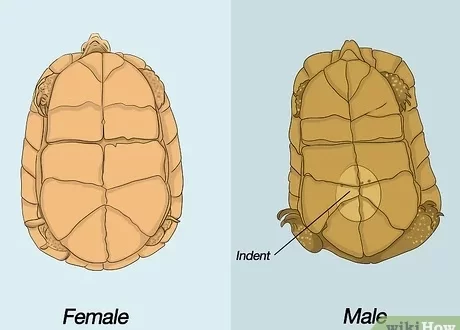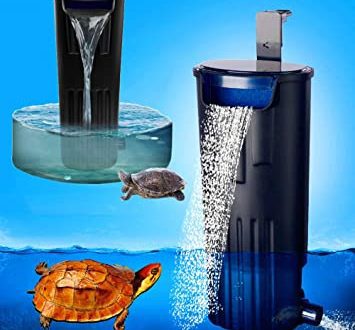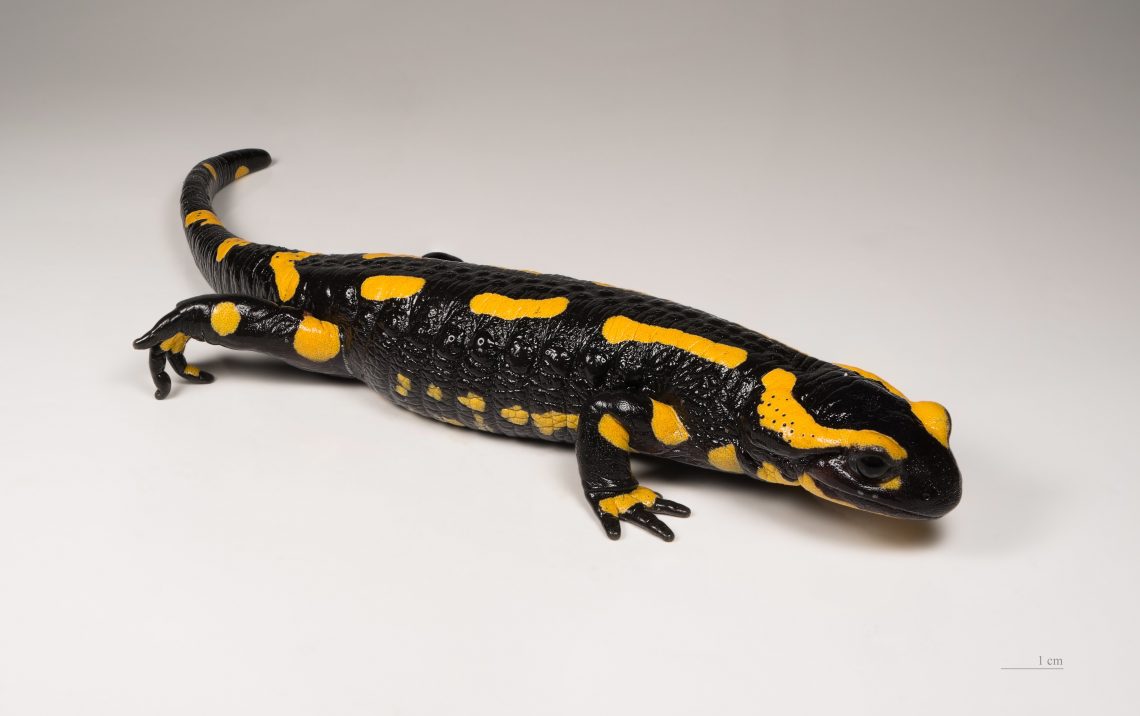
Fire salamander (Salamandra salamandra)
The largest representative of the Salamandriae family, it is excellent for both the beginner and advanced keeper.
Areal
The fire salamander is found in North Africa, Asia Minor, in Southern and Central Europe, in the east it reaches the foothills of the Carpathians. In the mountains rises to a height of 2000 meters. Settles on wooded slopes along the banks of streams and rivers, prefers old beech forests littered with windbreak.
Description
The fire salamander is a rather large animal, not reaching a length of 20-28 centimeters, while slightly less than half the length falls on a rounded tail. It is painted brilliant black with irregularly shaped bright yellow spots scattered all over the body. The paws are short but strong, with four toes on the front and five on the hind legs. The body is wide and massive. It has no swimming membranes. On the sides of the bluntly rounded muzzle are large black eyes. Above the eyes are yellow “eyebrows”. Behind the eyes are convex elongated glands – parotids. The teeth are sharp and round. Fire salamanders are nocturnal. The method of reproduction of this salamander is unusual: it does not lay eggs, but for the whole 10 months it bears it in its body, until the time comes for the larvae to hatch from the eggs. Shortly before this, the salamander, constantly living on the shore, comes into fashion and is freed from eggs, from which from 2 to 70 larvae are immediately born.
Fire salamander larvae
The larvae usually appear in February. They have 3 pairs of gill slits and a flat tail. By the end of summer, the gills of the babies disappear and they begin to breathe with lungs, and the tail becomes round. Now fully formed, small salamanders leave the pond, but they will become adults at 3-4 years old.
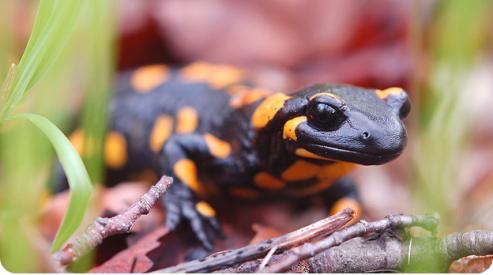
Content in captivity
To keep fire salamanders, you will need an aquaterrarium. If it is difficult to find, then an aquarium may also be suitable, as long as it is large enough 90 x 40 x 30 centimeters for 2-3 salamanders (2 males do not get along together). Such large dimensions are needed in order to be able to accommodate a reservoir of 20 x 14 x 5 centimeters. The descent should be gentle or your salamander, having got into it, will not be able to get out of there. Water must be changed every day. For bedding, leafy soil with a small amount of peat, coconut flakes is suitable. Salamanders love to dig, so the substrate layer should be 6-12 centimeters. Clean every two to three weeks. They wash not only the aquarium, but also all the objects in it. IMPORTANT! Try not to use different detergents. In addition to a reservoir and a 6-12 cm layer of bedding, there should be shelters. Useful: Sherds, upturned flower pots, driftwood, moss, flat stones, etc. The temperature in the daytime should be 16-20°C, at night 15-16°C. The fire salamander does not tolerate temperatures above 22-25°C. Therefore, the aquarium can be placed closer to the floor. Humidity should be high – 70-95%. To do this, every day the plants (not dangerous for your pet) and the substrate are sprayed with a spray bottle.
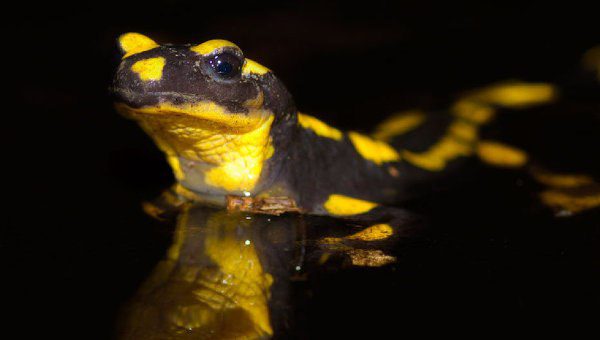
Feeding
Adult salamanders need to be fed every other day, young salamanders 2 times a day. Remember: overfeeding is more dangerous than underfeeding! In food you can use: bloodworms, earthworms and mealworms, strips of lean beef, raw liver or hearts (do not forget to remove all fat and membranes), guppies (2-3 times a week).
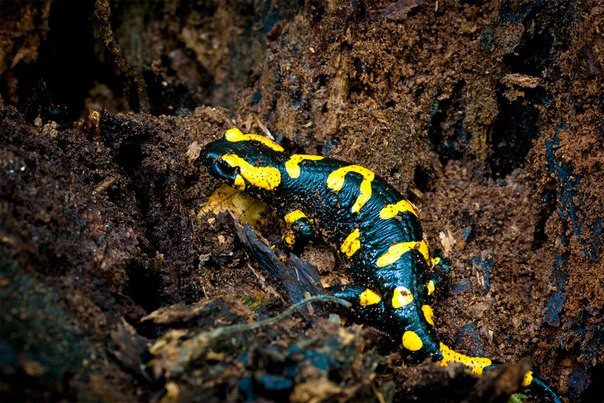
Safety measures
Despite the fact that salamanders are peaceful animals, be careful: contact with mucous membranes (for example: in the eyes) causes burning and confinement. Wash your hands before and after handling a salamander. Handle the salamander as little as possible, as it can get burned!




